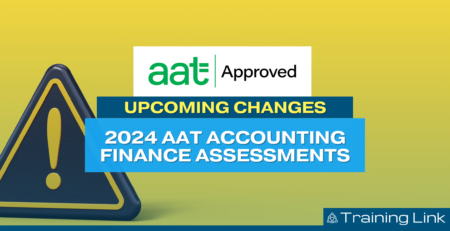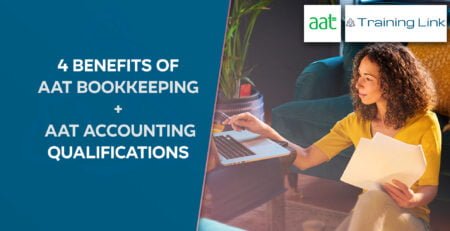Introducing – Training Link’s Videos For ICB and AAT Courses
“Do you do videos?”
A common question from both ICB and AAT students.
We’ve already spoken about the carefully constructed educational experience offered by Training Link. And the cornerstone of this has always been our study books. Exclusive to us – and regularly improved after continuous feedback (both verbal and based on exam pass rates).
But people learn in different ways and we’ve thought a lot about producing our own ICB & AAT videos. But to do it well takes time.
Well, in the last few years, we’ve been busy…
We started planning in September 2020 and wanted to know just what makes the perfect video learning material. Content that adds genuine value to the student experience, so when people ask us for AAT Videos we can say hand on heart that ours are the best available.
So we started researching and very quickly we understood exactly what we didn’t want to do…
How NOT to do a video
These days we’re drowning in video content so it didn’t take long to see exactly what we didn’t want to do.
You’re never more than one YouTube click away from crudely assembled videos shot on an iPhone. Unscripted, unedited, and often inaccurate. Everything we wanted to avoid.
We knew immediately that our videos should follow the same rigorous development process that we use to develop our study books.
Planning our collection of ICB and AAT videos
The speed that videos can be thrown together means that they can be churned out as a way of being found on YouTube. More of a form of content marketing than an educational resource. And when that’s the case it’s easy to see why YouTube is awash with videos like this.
But that’s not the Training Link way.
So in early September 2020 the academic team were busy pondering how to create videos that added genuine value.
What format should they be?
Are they scripted or more like pre-recorded lectures?
How many should we film?
What are the priority topics where we can make a real difference in improving our students understanding?
There were frank and impassioned discussions. The flipchart was filled with ideas for topics and diagrams about where they would fit into the student experience. Next it was time to try some scripting and filming.
Our first prototype videos helped us to find out what worked (and what didn’t)
Some of you may remember our videos from last September. The Ask Jen videos tackled some AAT topics and some ICB subjects suggested by our students.
These were fun to make and we had some great feedback.
But for us, they were invaluable in learning in how to improve. They were a way to find out what worked, what didn’t, and to get feedback to inform the development of the videos we really wanted to make. For example, in these initial efforts there just aren’t enough diagrams in them.
Our next test was to film some content about Learning Techniques for the ICB’s annual conference.
Now things were starting to take shape. It’s a little long and could be edited down a little bit more but there’s an established visual style and a good mix of slides and footage. That’s why in January we felt confident enough to start writing scripts.
But there’s a strict educational writing process that must be followed…
3 drafts of a script before we film a single frame
A first draft lands on the desk of our Head of Education. And that’s when the red pen comes out.
All entries and all figures are checked, and examples scrutinised. If a sentence isn’t as clear as it could be, if the terminology used isn’t appropriate for the awarding body (we create videos for our ICB and AAT courses, but not all of them can be used across both), if it can be improved in any way then there will be red pen all over it.
So back it goes to the writer for the second draft. And after this is completed there should be a lot less red ink scattered across the pages. But improvement is always possible so it’s still unlikely to be ready to film just yet.
Lights, camera, action – let’s start filming our AAT videos
It’s usually the third draft that reaches the studio teleprompter.
After a few trial runs, you’ll hear a click of the camera, a snap of the clapperboard, and then one of our tutors talks directly to the camera.
It’s because they are so tightly scripted, proofed, and edited that makes them effective.
Nobody wants to watch an hour-long death-by-powerpoint. Long, flabby presentations, whose only real value is as a cure for insomnia, won’t help you get through your exams.
That’s why our videos are only as long as they need to be and no longer.
Most are five minutes long. Others may be fifteen minutes. But the scripting and proofing process delivers an economy and clarity of language that leads to understanding.
Introducing Training Link’s Video Content
We showed this clip on the webinar we recently hosted with AAT and we have a similar number of videos available for all of our ICB courses. It gives you a 40-second demonstration of the videos you’ll be watching when you enrol with Training Link.
So to answer the original question – “Do you do videos?” Yes, we do. And we think you’ll love them.
Watch 3 of our videos – for free
Three free video examples – one for each level of study.
Whether you’re new to the subject or are studying at a higher level, these short, five-minute videos give you a flavour of what you can expect inside our e-learning platform.
Our videos perfectly supplement our award-winning study experience which is rooted in printed study manuals and award-winning tutor support.











